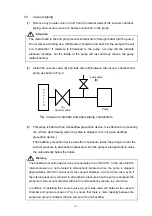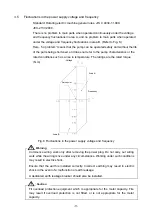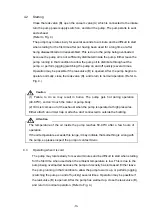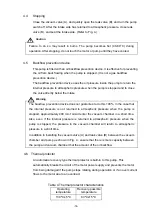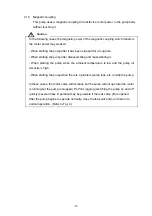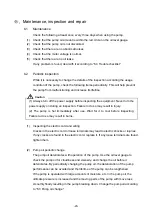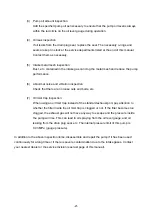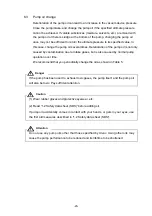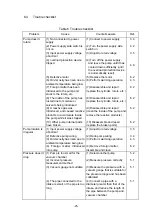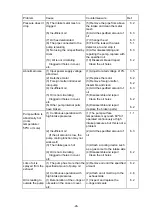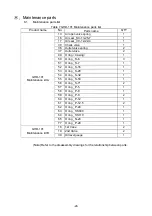
-18-
5.
Pump performance
5.1 Ultimate
pressure
The “ultimate pressure” referred to in catalogs and this instruction manual means
“the lowest pressure attainable when the pump is operated without any gas being
introduced through the intake (no-load operation)”. We measure this with a Pirani
vacuum gauge at the intake while using the specified pump oil.
In actual vacuum devices, the ultimate pressure is higher than the values stated in
catalogs. This is for the following reasons.
1. The vacuum gauge is installed far from the pump, and also water vapor
produced by the drops of water and rust that are on the inside walls of the device
and on the piping, etc. increase the ultimate pressure.
2. The volatile substances that are dissolved in the pump oil become gas again
and increase the ultimate pressure. (Deterioration of the pump oil)
3. Vacuum leaks in the vacuum path that lead to gas being introduced increase the
ultimate pressure.
5.2 Exhaust
velocity
The exhaust speed of a sealed rotary vacuum pump varies depending on the type
gas being introduced and the pressure. Generally, the exhaust speed is highest at
high pressures and reduces together with the pressure. The nominal exhaust speed
of this pump is that when introducing dry air to the pump. Fig. 9 shows the
relationship between the intake pressure and exhaust speed.
5.3 Required
power
The power required to drive the pump is the total of that for the rotation friction
(mechanical work) and that for compressing the air (compression work), and reaches
a maximum at approximately an intake pressure of 4×10
4
to 2.7×10
4
Pa. At 13,3 Pa
or less, there is little compression work, and almost all the power is consumed by
mechanical work.




